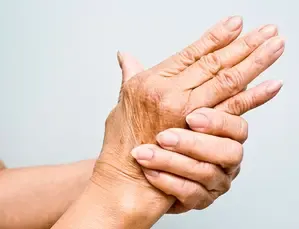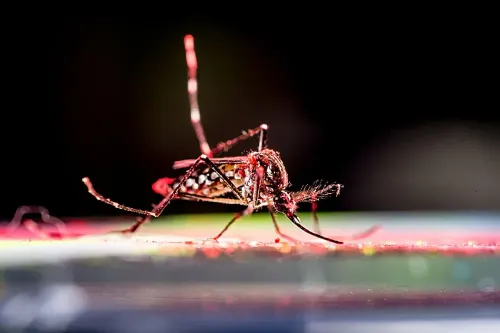Can New Technology Using Body Fluids Diagnose Arthritis Accurately in Just 10 Minutes?

Synopsis
Key Takeaways
- This technology provides accurate diagnosis of arthritis in just 10 minutes.
- The method uses body fluids for analysis, making it less invasive.
- It has over 94% accuracy in distinguishing arthritis types.
- The research team aims to expand its application to other diseases.
- It significantly reduces the time and cost associated with traditional diagnostic methods.
New Delhi, April 28 (NationPress) A group of researchers from Korea has introduced an innovative technology that leverages body fluids for precise diagnoses of osteoarthritis and rheumatoid arthritis within a mere 10 minutes.
Research indicates that over 50% of individuals aged 65 and above report symptoms of osteoarthritis, while rheumatoid arthritis is a critical chronic condition affecting nearly 1 in 100 people during their lifetimes.
Despite their apparent similarities, osteoarthritis and rheumatoid arthritis stem from different causes and require distinct treatments, making accurate early diagnosis essential. Traditional diagnostic methods have relied on X-rays, MRI scans, and blood tests, which can be slow, expensive, and sometimes inaccurate.
The team from the Korea Institute of Materials Science (KIMS), in partnership with Seoul St. Mary’s Hospital, focused on synovial fluid found in human joints.
They investigated the variations in metabolite composition—byproducts of internal chemical processes—within synovial fluid.
Using these metabolic variations, they created a technology that can differentiate between osteoarthritis and rheumatoid arthritis in just 10 minutes and also evaluate the severity of rheumatoid arthritis.
The researchers employed Surface-Enhanced Raman Scattering (SERS) technology, a method that amplifies optical signals from molecules millions of times. This technique enhances signals from minute molecules in synovial fluid and, combined with AI-driven analysis and mathematical algorithms, identifies the substances linked to arthritis.
Moreover, they designed a quick and simple diagnostic method using a sensor with a sea urchin-shaped gold nanostructure on a moisture-absorbing paper surface, facilitating efficient detection through body fluids.
The team tested this technology on 120 patients.
The results, published in Small, a prestigious journal in the nanomaterials field, revealed that osteoarthritis and rheumatoid arthritis could be diagnosed with an accuracy exceeding 94%.
Additionally, the technology achieved over 95% accuracy in assessing the severity of rheumatoid arthritis. These results highlight that this technology significantly decreases the time and cost associated with arthritis diagnosis while maintaining a high level of accuracy.
“If commercialized, this technology will not only enhance diagnosis but will also be invaluable for monitoring treatment progress,” stated lead researcher Dr. Ho Sang Jung from the Advanced Bio and Healthcare Materials Research Division at KIMS.
“We also aim to broaden our research to encompass a wider array of diseases in the future,” he added.









